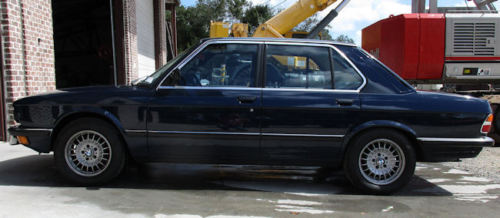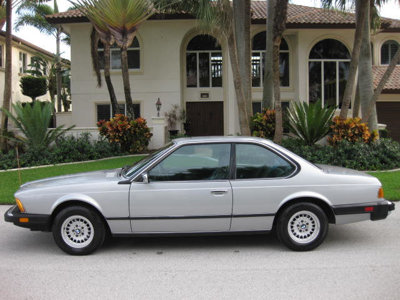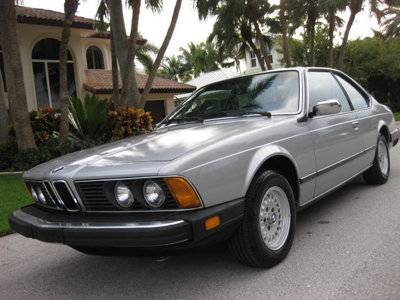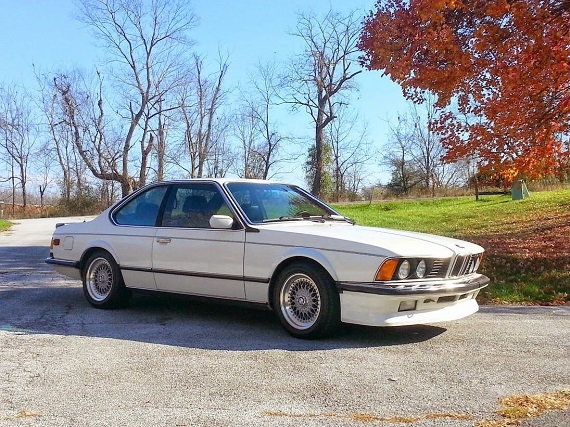The Type 34 Karmann Ghia was a sales failure – it was too expensive – costing about 50% more than a normal Type 14 Ghia. But that didn’t mean it wasn’t a very good looking failure. While the underpinnings were shared with its less exotic 1500 cousins, the upscale Karmann Ghia was aimed squarely at making peasants feel like landed gentry and certainly looked the part. Sweeping character lines ran the length of the car, giving it its signature ‘razor’ nickname. Added to the upscale look in terms of desirability today is rarity. Never imported to the United States, Type 34 production only achieved about 42,500 units – less than 10% of the total number of the more popular and familiar Type 14 Karmann Ghia. Today’s light green example is great to see:
Tag: Pacific Blue
My recent coverage of the 5-series BMWs seems timely. Just last week, I looked at a 1982 BMW 528e. Since it’s been so short a time, I won’t reiterate the major highlights of the model again – click HERE if you’d like to read those details. So why look at what many consider the least excited E28 so quickly again?
Well, in part it’s because of what occurred this past weekend. If you weren’t paying attention, a stellar 1988 BMW 535i came up on Bring a Trailer. It was probably the most impressive older 5-series I’ve seen in a long time. So it was expected to bring pretty big numbers when the auction closed, and like looking through the picture gallery, it didn’t fail to disappoint. The final bid was $50,000 – unfathomable to this point for most of the E28 lineup.
Admittedly, the example I have today isn’t as nice. But it shares many things in common. First, it’s not a top-flight model, though again the Eta motor isn’t what many would prefer. So what does it have going for it?
CLICK FOR DETAILS: 1983 BMW 528e on eBay
Comments closedIt’s funny how priorities change. A decade ago, I would not have given a second look to a 528e. Growing up with a E28 M5 in the garage created both an appreciation for the E28 and the dichotomous dismissal of lower range vehicles. Sure, the M5-look 535is was cool, and alongside the M5 we even had a very nice ’85 535i that was a pretty good driver. But below that? No, I seldom gave the 533i, 528e or even 524td a second look on the road. Today, though? Even if it’s not a performance car by most standards, a survivor 528e is certainly worth a second look:
CLICK FOR DETAILS: 1983 BMW 528e on eBay
Comments closedThough they’re the juggernaut of BMW performance today, the reality is that there were quite a few stumbling blocks and it took many years for BMW Motorsport GmbH to establish themselves as the benchmark for German performance. Though many consider the M1 the genesis of BMW M, in fact the brand was born nearly a decade earlier with the introduction of the 3.0 CSL. The high performance E9 was built together with BMW’s competition department, a relationship which ultimately resulted in the birth of BMW’s Motorsport division. A few years later, the new entity would give birth to an equally legendary creation, the 2002 Turbo. But when it came to the first car to carry the “M” badge, it was of course the legendary M1 with its motorsport derived M88/1 double overhead cam inline six screaming in the middle of the car. You’d think this recipe carried over immediately to the sedan range, but that was not immediately the case. First, BMW produced the M535i in the E12 chassis. Though the E28 model of the same designation was mostly an appearance package, the E12 model was turned up over the rest of the range – but not with the M88; BMW instead relied on the M30 to power the M535i. Then, there was a year where nothing happened; the M1 was out of production, the E12 was replaced by the E28, and ostensibly BMW had no real performance models. That was remedied at the 1983 Frankfurt Motor Show, where a juiced up version of the 635CSi was offered. It was labeled the M635CSi; but unlike the M535i, under the hood wasn’t the venerable M30 that powered the normal 635CSi. In its place, the Motorsport division decided to slot the M88, now with /3 designation; the result was 286 horsepower – a staggering figure at the time, considering that the contemporary Porsche 930 was considered fairly bonkers with a little over 300 horsepower and though it looked much larger, the early E24s only weighed about 200 lbs. more than the Porsche. Coupled with some aerodynamic tweaks, heavier duty suspension, brakes and larger wheels and tires, the result was the menacing presence worthy of the nickname “Shark”. For all intents and purposes, this was really the first “M” car for the masses:









